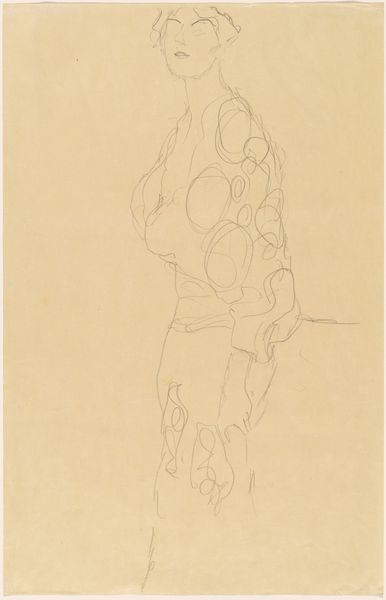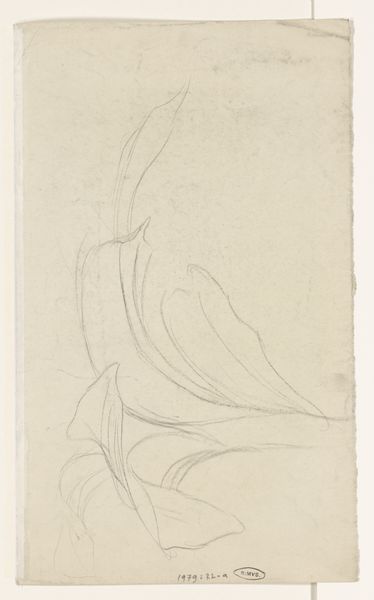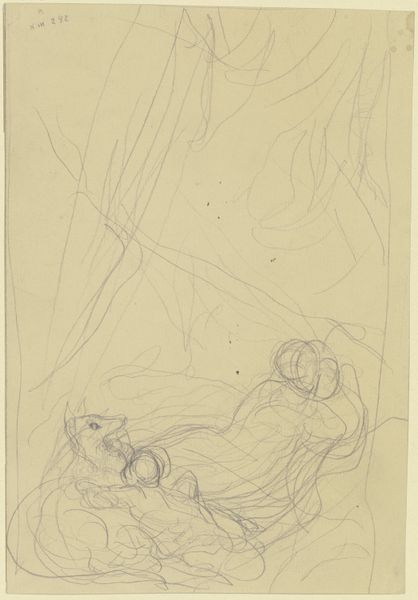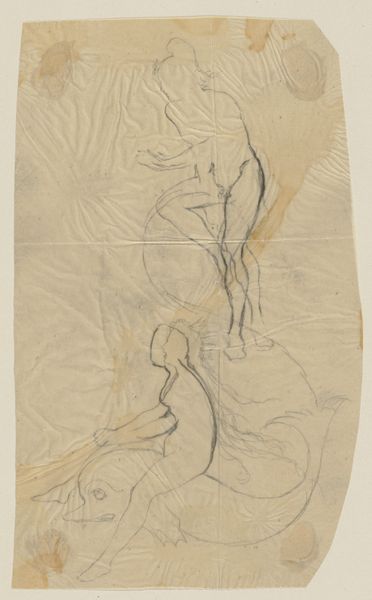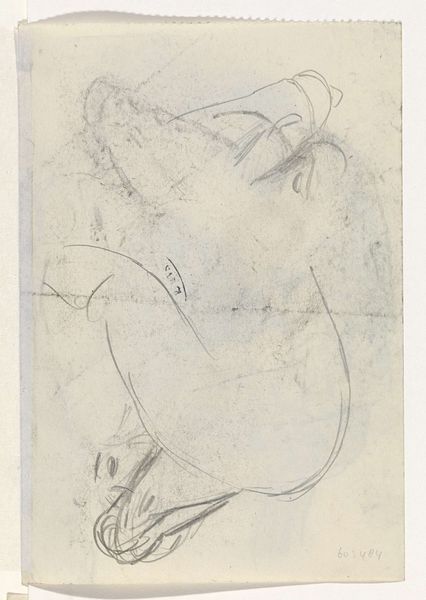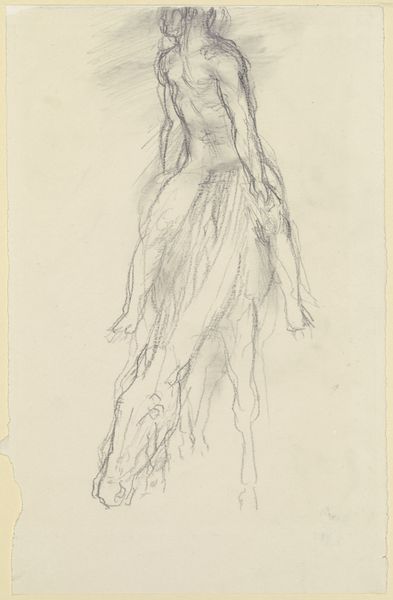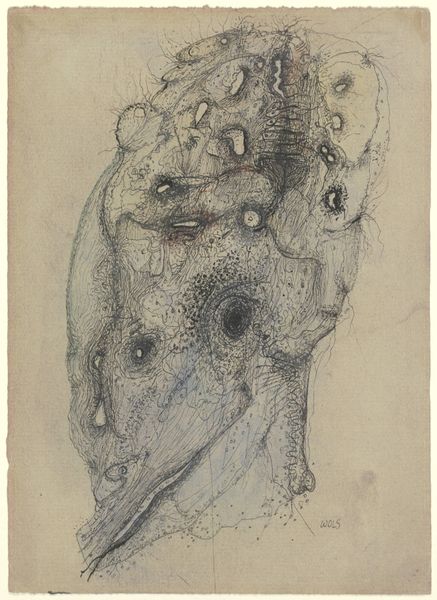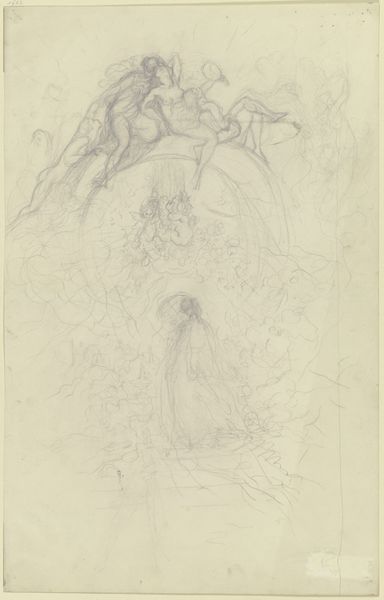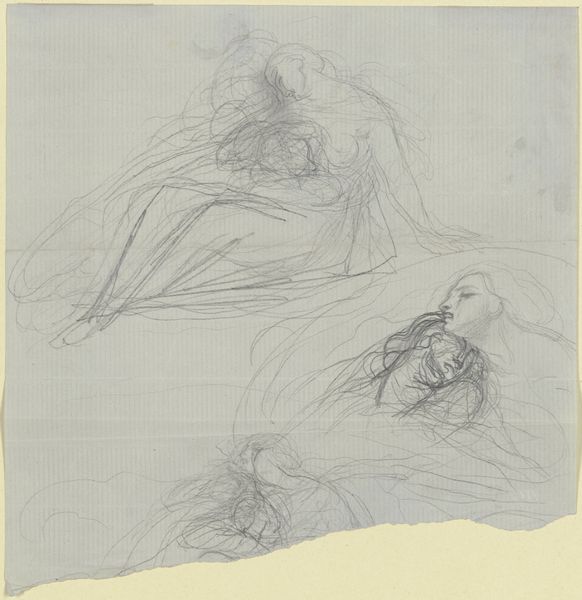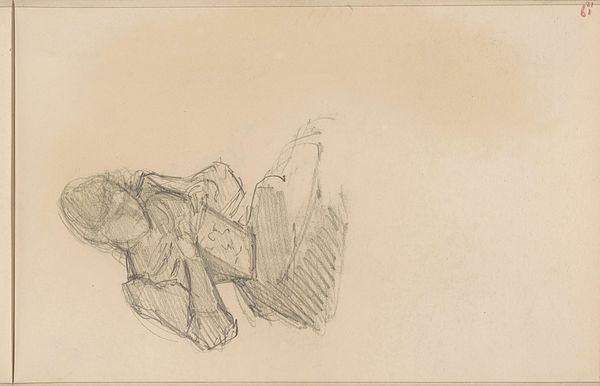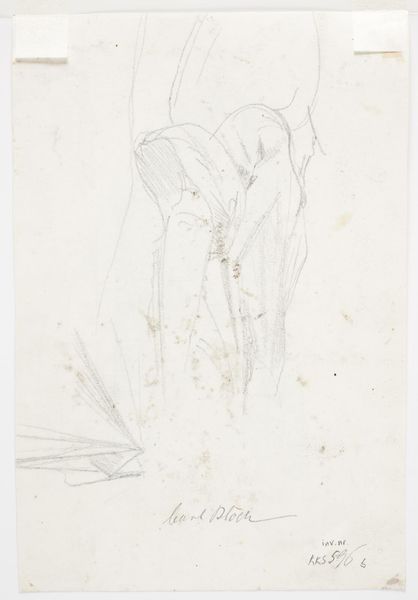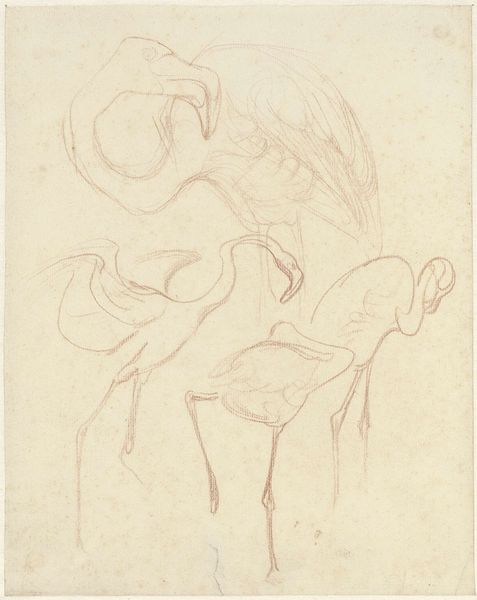
drawing, paper, graphite
#
portrait
#
drawing
#
art-nouveau
#
figuration
#
paper
#
symbolism
#
graphite
#
portrait drawing
Dimensions: 557 × 372 mm
Copyright: Public Domain
Editor: Here we have Gustav Klimt's 1910 graphite drawing, "Seated Woman from the Front with Hat, Face Hooded," rendered on paper. I'm struck by its fragility, and almost tentative nature; the lines feel so light and delicate. What can you tell me about this work? Curator: Notice how Klimt obscures her face, yet her posture and the grand hat project an air of societal importance. Think about the visual vocabulary of high society at the time. What symbols were associated with feminine identity and status? The hat, of course, but what else? Editor: Her elaborate dress, maybe? And her seated pose? Curator: Precisely. These visual cues tell a story about her place in the world, or at least the role she is expected to play. Now, consider the hood. Is it obscuring or revealing? Editor: That's a good question! It's hiding her face, but it's also kind of emphasizing her mystery. It suggests there’s something concealed. Curator: And what is the emotional resonance of concealing something? It prompts the viewer to speculate. Is she concealing sorrow, defiance, or perhaps simply boredom? Klimt masterfully uses visual codes of status and then undermines them with this element of mystery. Think of the deeper psychological tension Klimt reveals between social expectation and personal identity. What do you make of that? Editor: It’s interesting how those hidden emotional states tie into what’s expected of women in that period. I never thought about how much those visuals can say! Curator: Yes, it is in that contrast – the visible and the hidden – that much of Klimt's power resides. It makes you think about all of the art from the era, not just visually, but culturally.
Comments
No comments
Be the first to comment and join the conversation on the ultimate creative platform.

